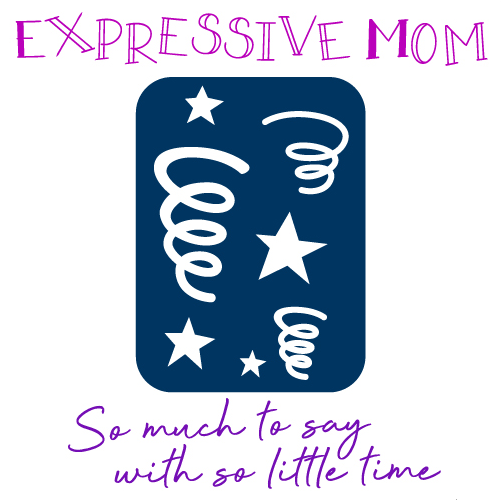A new contribution has been written by David Pino, a school psychologist, He has worked in education for the last 20 years. David has significant experience and expertise with learning disabilities, psychological evaluations, behavior, and special education. He is currently serving as an educational advocate to assist families with the special education process.
What is Autism?
Autism is a developmental disorder that begins early in childhood; it is usually noticed in children by age 3. Defining characteristics of autism include communication deficits, poorly developed reciprocal social interactions, stereotyped behaviors, and restricted interests. These deficits occur at different levels of severity which has evolved into the contemporary view of autism as a spectrum disorder, and it is often referred to as Autism Spectrum Disorder (ASD), Autistic Disorder (AD), or Autism.
Traditionally, the autism range has included Autistic Disorder, Asperger Syndrome, and Pervasive Developmental Disorder-Not Otherwise Specified (PDD-NOS).
Autistic Disorder is sometimes called classic autism. It is characterized by:
- Significant language delays including reduced instances of language that has communicative and reciprocal intent.
- Minimal reciprocal social interactions. For example, avoidance of eye contact, lack of appropriate facial expressions, inability to appropriately communicate emotions, lack of understanding of shared emotions, and inability to use verbal and nonverbal behaviors for social interchange.
- Stereotyped behaviors and restricted interests. These may include unusual sensory interests toward objects, unusual or repetitive hand and finger movements, and excessive interest or reference to either unusual or highly specific topics or objects.
Asperger Syndrome, while somewhat milder than Autistic Disorder, has both similar and distinct characteristics including:
- Difficulty with the social aspects of speech and language such as limited range of intonation, one-sided conversations, literal interpretations, and inability to shift topics. Vocabulary development is usually advanced while understanding of figurative language is a weakness.
- Difficulty with social cognition a lack of social and/or emotional reciprocity, eye contact, and friendships. Social awkwardness such as not reacting appropriately to social interactions and not recognizing other’s feelings or reactions. Difficulties with social cognition may result in behavioral rigidity.
- Restricted and repetitive behaviors, interests, and activities. This may result in inflexibility in regard to routines. Preoccupation with a narrowed topic of interest which often dominates conversations and thoughts.
Pervasive Developmental Disorder-Not Otherwise Specified is used to categorize those individuals who meet some, but not all, of the criteria for Autistic Disorder or Asperger Syndrome. PDD-NOS is usually marked by fewer and milder symptoms than Autistic Disorder or Asperger Syndrome. Pervasive deficits in the development of reciprocal social interaction, communication, or stereotyped and restricted behaviors are apparent.
History of Autism
Assuming that Autism is a neurological disorder and not caused by “bad” parenting or environmental toxins then it has, most likely, always existed among human beings; however, it was not scientifically described or empirically researched until the 20th century.
Early 1900s
In the early 1900s autism was thought to be a form of childhood schizophrenia, feeble-mindedness, or childhood psychosis.
The term autism was first used by the Swiss psychiatrist Paul Eugen Bleuler between 1908 and 1912. He used it to describe schizophrenic patients who had withdrawn from social contact, appeared to be living in their own world, and were socially disconnected. The root of the word autism is derived from the Greek “autos” which means “self”. That root is combined with the Greek suffix “ismos,” meaning the act, state, or being of. Bleuler used the word “autism” to mean morbid self-admiration and withdrawal into self. It suggests a state of being absorbed by oneself, lost in oneself, removed from social interaction, and isolated from social interaction. While Bleuler described and documented characteristics of autism, his adult patients were diagnosed as having schizophrenia and children were diagnosed as having childhood schizophrenia.
1920s and 1930s
In 1926, Dr. Grunya Efimovna Sukhareva, a Russian psychiatrist described what would later become the core deficits of Asperger Syndrome in boys that she labeled as having schizoid personality disorder of childhood. In 1933, Dr. Howard Potter described children who would now be identified as autistic as having a childhood form of schizophrenia.
1930s and 1940s
The two main pioneers in autism research, Hans Asperger and Leo Kanner, began working separately in the 1930’s and 1940’s. In 1934 Hans Asperger of the Vienna University Hospital used the term autistic and in 1938 he adopted the term “autistic psychopaths” in discussions of child psychology. However, Leo Kanner of Johns Hopkins Hospital began using the term autism to describe behaviors that are now recognized as Autism Disorder or classical autism. Leo Kanner is the one who is usually credited for using the term autism as it is known today.
Kanner’s 1943 descriptions of autism were the result of his observations of eleven children who showed a marked lack of interest in other people, difficulties in social interactions, difficulty in adapting to changes in routines, good memory, sensitivity to stimuli (especially sound), and a highly unusual interest in the inanimate environment. These socially withdrawn children were described by Kanner as; lacking affective contact with others; being fascinated with objects; having a desire for sameness; and being non-communicative in regard to language before 30 months of age. Kanner emphasized the role of biology in the cause of autism. He felt that the lack of social connectedness so early in life must result from a biological inability to form affective relationships with others. However, Kanner also felt that parents displayed a lack of warmth and attachment to their autistic children. In his 1949 paper, he attributed autism to a “genuine lack of maternal warmth.”
In 1944, working separately from Kanner, Hans Asperger described a “milder” form of autism, known today as Asperger Syndrome. Asperger also studied a group of children who possessed many of the same behaviors as described in Kanner’s descriptions of autism. However, the children he studied demonstrated precocious vocabulary and speech development but poor social communication skills. These children appeared to have a desire to be a part of the social world, but lacked the necessary skills. He also mentioned that many of the children were clumsy and different from normal children in terms of fine motor skills.
1950s
During the 1950s, Bruno Bettelheim, a University of Chicago professor and child development specialist, furthered Kanner’s 1949 view that autism resulted from a lack of maternal warmth. Bettleheim’s view of autism being caused by emotionally cold and distant mothers became known as the Refrigerator Mother Theory of autism. The idea behind the theory was that children became autistic because mothers didn’t interact, play, or them; in a sense, they were “frigid.” He published articles throughout the 1950s and 1960s to popularize this position. Proponents of this view were searching for a place to lay blame for autism.
It was also during this decade and into the next that parents were counseled to institutionalize their children in order for them to receive appropriate treatment.
1960s
Beginning in the 1960s there was increased awareness within the professional community that the refrigerator mother theory did not adequately account for autism. The theory ignored the fact that siblings of autistic children were not autistic despite having the same mother, and scientific advancements began to suggest more biological causes.
In 1964, Bernard Rimland, a psychologist with an autistic son, stressed the biological causes of autism in his book “Infantile Autism: The Syndrome and its Implications for a Neural Theory of Behavior.” The publication of this book directly challenged the prevailing refrigerator mother theory of autism. In 1965, Rimland established the Autism Society of America, which was one of the first advocacy groups for parents of children with autism. He established the Autism Research Institute in 1967 to conduct research on treatment for autism.
In 1967 autism continued to be classified under schizophrenia in the International Statistical Classification of Diseases and Related Health Problems. This promoted the view that autism was a mental illness rather than a developmental disability.
1970s
There was a push during this decade to better define autism and, with scientific advancement, there was better understanding of autism as having a neurobiological basis.
1980s
The publication of the Diagnostic and Statistical Manual of Mental Disorders (DSM-III) in 1980 finally set autism apart from schizophrenia as it was now categorized as a neurodevelopmental disorder. Autism research continued to increase during the 1980s along with recognition within the scientific community that autism resulted from neurological disturbances rather than pathological parenting.
It was during this decade that Asperger’s work was translated to English and published. The term, “Asperger’s Syndrome” was first used in 1981 by the British psychiatrist Lorna Wing. She also developed the Wing’s Triad of Impairments, which is Impairment in Imagination, Impairment in Social Communication, and Impairment in Social Relationships to describe autism.
1990s
In 1994 Asperger’s syndrome was officially added to the DSM-IV as a progressive developmental disorder. Two nonprofit groups, the National Alliance for Autism Research and Cure Autism Now, were founded to stimulate autism research and raise awareness about the disorder. Research starts to suggest that autism is a spectrum disorder. Near the end of the decade, as autism rates rose, it was speculated that autism was due to mercury in vaccines.
2000s
In 2000, vaccine makers removed thimerosal, a mercury-based preservative, from all routinely given childhood vaccines. Public fears were that exposure to the preservative were related to autism. The National Institute of Health estimated that autism affected 1 in 250 children in 2001. The Institute of Medicine found no credible evidence of a link between thimerosal or any other vaccine and autism in 2004.
The prevalence of autism increased significantly during this decade as a result of better detection, broader diagnostic criteria, and increased public awareness. In 2007 the Centers for Disease Control and Prevention reported that approximately 1 in 150 children were diagnosed with autism. Part of this increase is a result of better understanding of autism as a spectrum disorder.
2010s
A hundred years later, the term autism describes a neurodevelopmental condition that results in significant social cognitive and social communicative impairment. Current research is focused on identifying biologically distinct subtypes of autism. The belief is that once subtypes are understood advance can be made in regard to understanding cause and developing effective treatments. The ultimate goal of this line of research is to eventually find a cure and be able to prevent it.




Connect With Me !